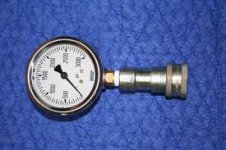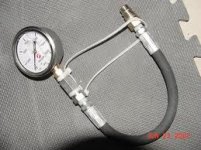tirebiter
New member
I'm a newbie at this. Bought an old (1948), very used CASE 400 diesel tractor to mow a couple of small fileds and help with snow removal here in Southeastern New England. Is it normal that when the hydraulic tank/reservoir cap is loose, the hydraulics all get really weak and slow ? I have to tighten the screw-on cap (Pipe thread) with a stillson wrench to get the hyrdraulics to work at what seems normal speed. When I loosen the cap, there is a lot of pressure that takes several minutes to bleed off. After the pressure is equalized the hydraulics are very slow again and generally speaking, work very poorly. I think the front-end loader and three-point-hitch hydraulics may have been an add-on when it was new. I'm not getting very far looking online for info about this tractor and thought maybe someone here could help fill me in on some. Thanks for any help any of you may have.


